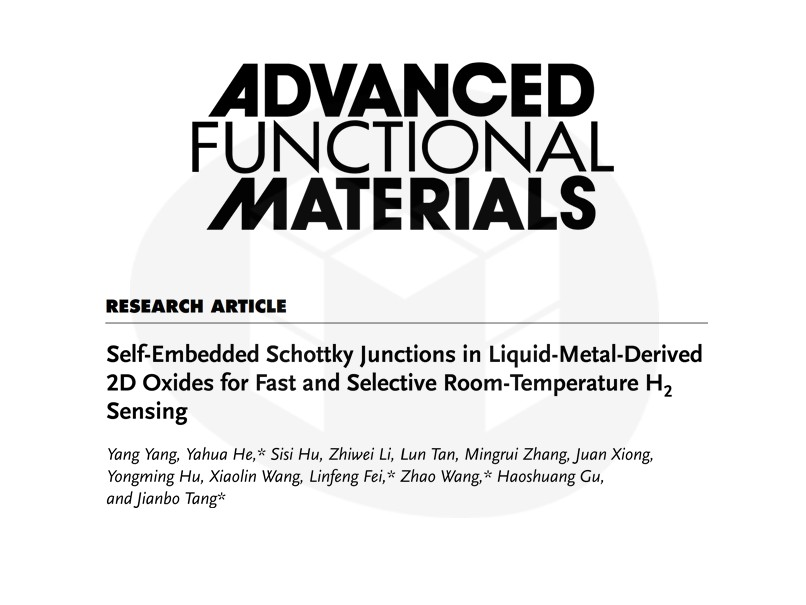
Semiconductor-based hydrogen sensors provide cost-efficient solutions for safety and a circular hydrogen-based economy. Liquid metal-derived 2D metal oxides show promise as ultrathin sensing materials. However, conventional exfoliation inevitably introduces metallic resides, which are often removed post-synthesis. Here the residual indium nano-islands are strategically retained within annealed 2D ultrathin In2O3 layers, creating self-embedded Schottky junctions. This unique architecture enhances gas-solid coupling at In/In2O3 interfaces. Tuning the composition and spatial distribution of the indium nano-islands amplifies the thermionic electron emission across the Schottky barriers. The resulting sensor achieves room-temperature hydrogen detection with a rapid response time of 4.4 s, high sensor response of 3.4, and >2.5 selectivity against common interferents. Remarkably, it exhibits only a 6.7% performance deviation after 6 weeks and shows good humidity resistance. These merits underscore the potential of the material and method for addressing the formidable challenge in developing room-temperature high-performance hydrogen sensors.
Read the full article at: https://doi.org/10.1002/adfm.202500605